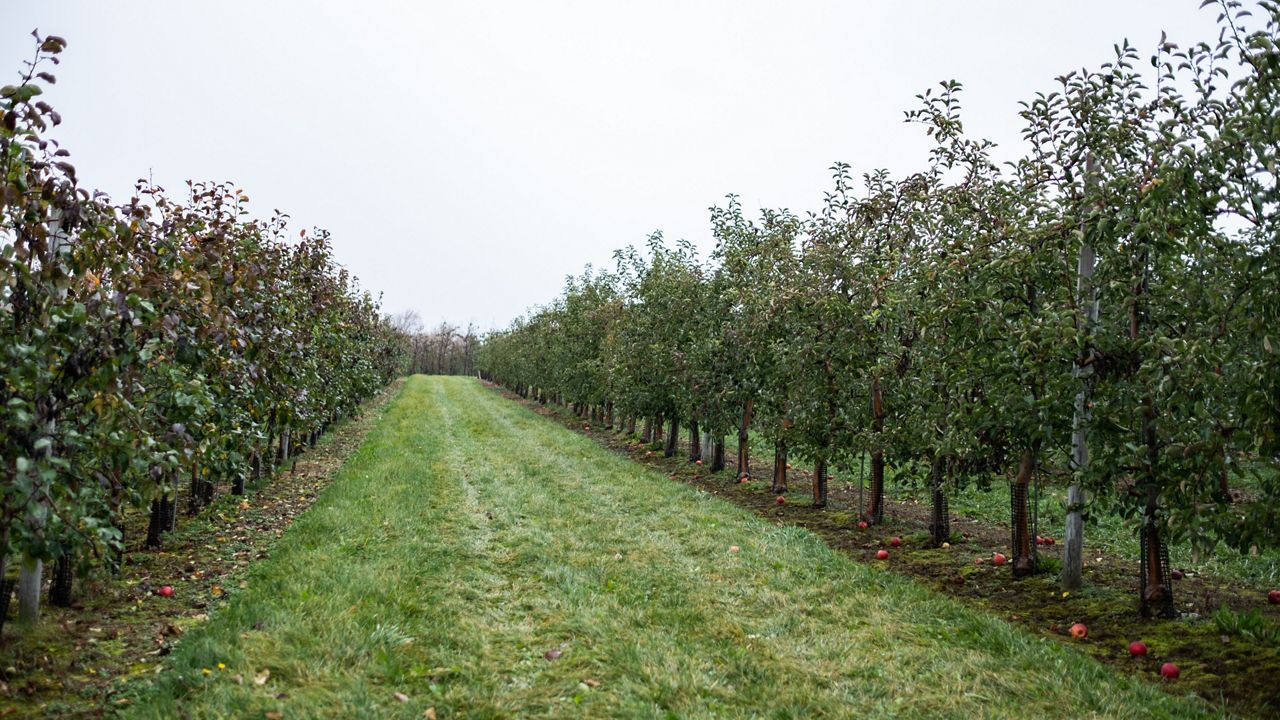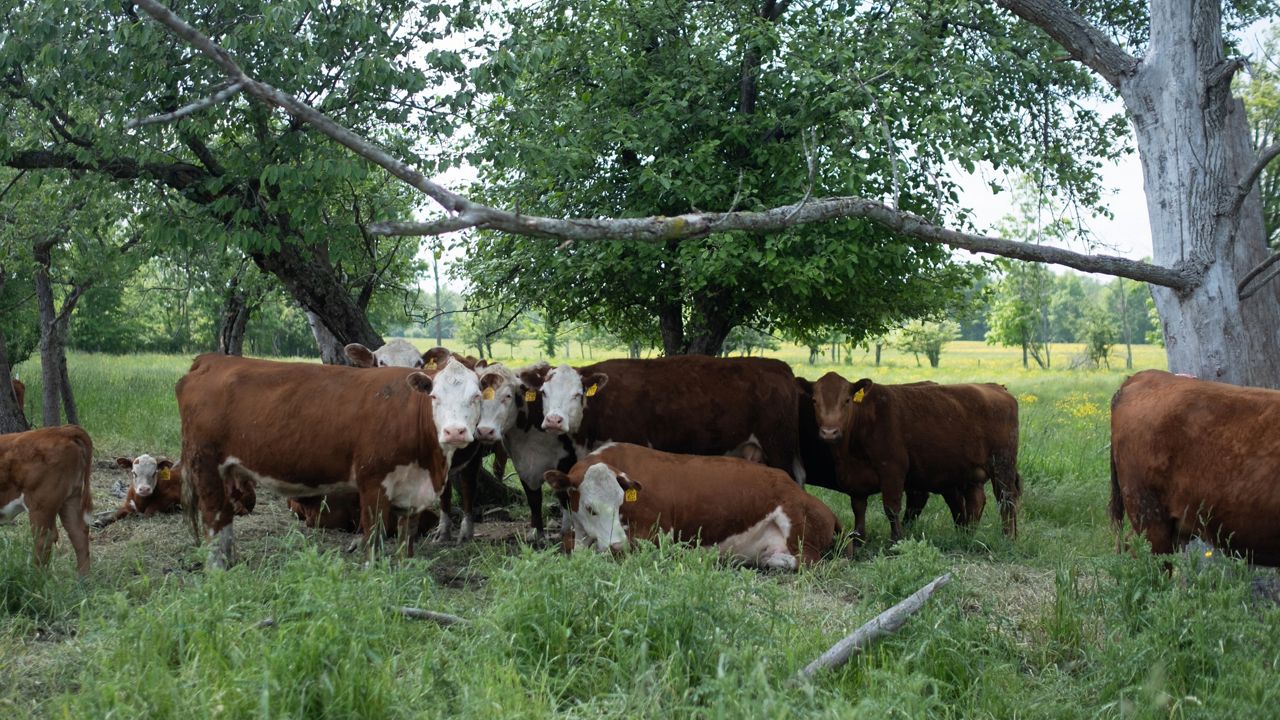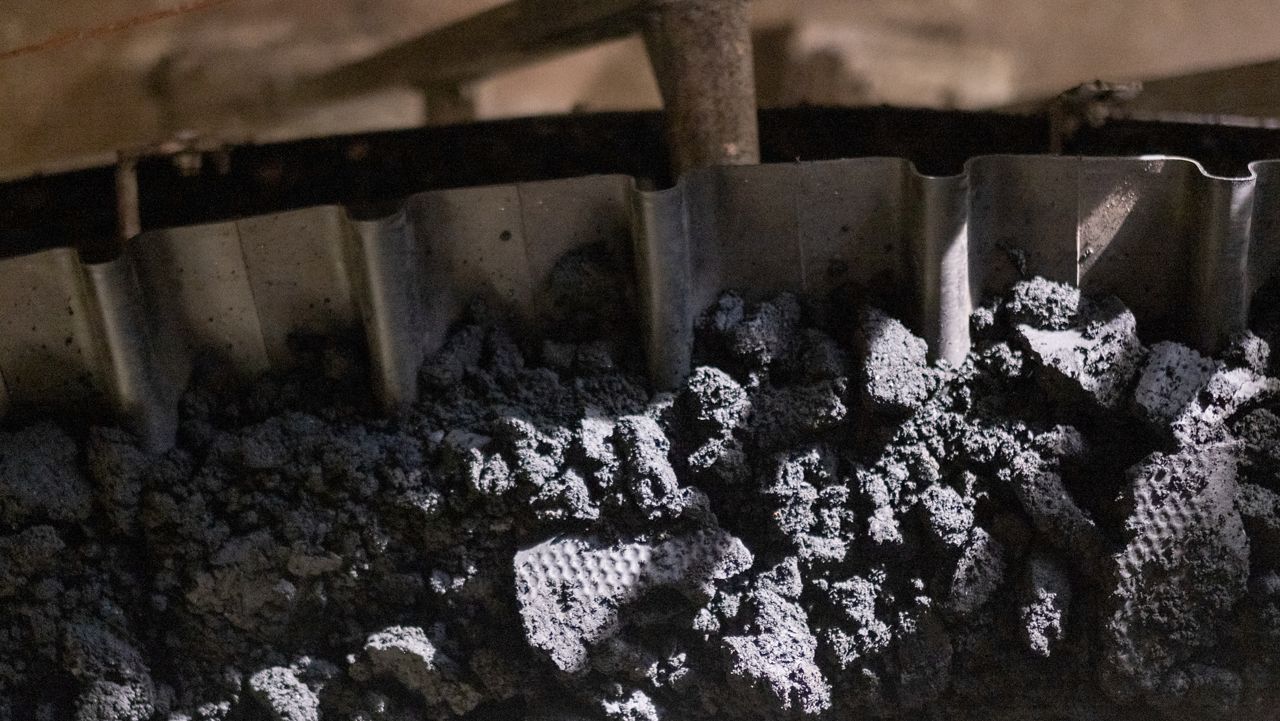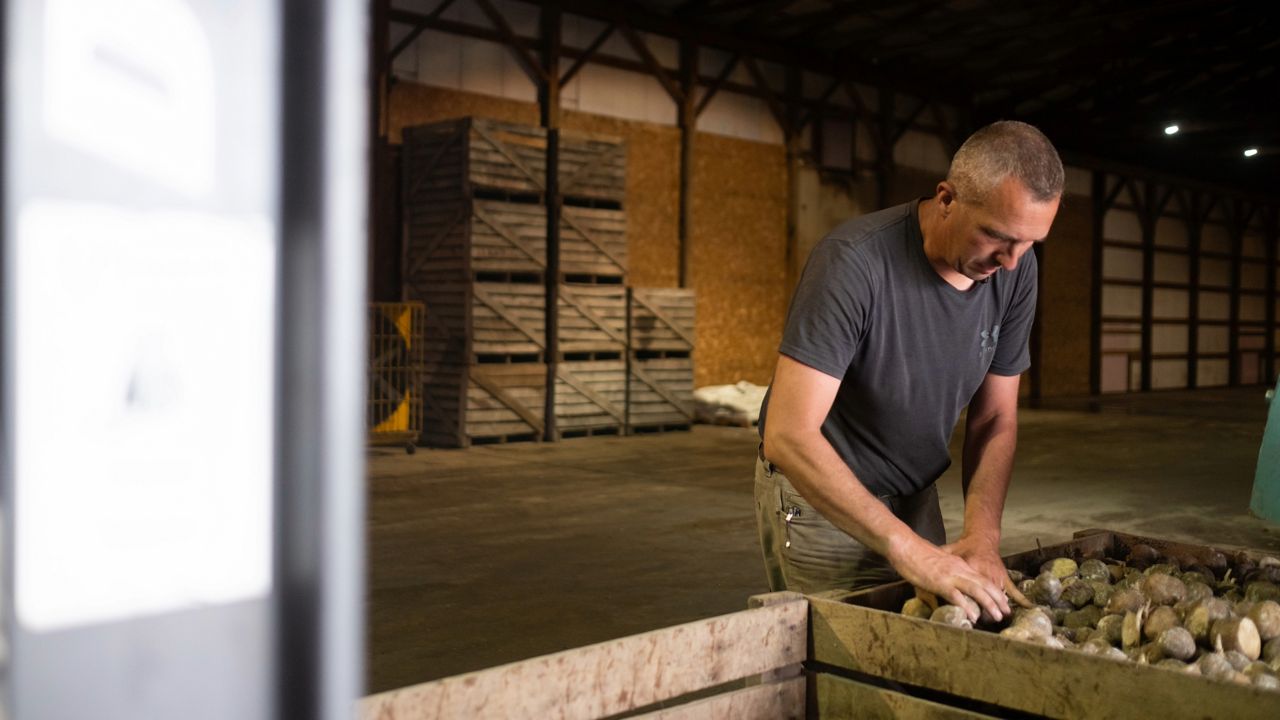A researcher at Cornell University is seeing success in treating fire blight, a rapidly spreading disease impacting apple growers, by using a UV light to kill the bacteria rather than with a commonly used antibiotic treatment.
The blight can ravage orchards quickly if not treated constantly, infecting and eventually killing the trees that lead to loss.
Kerik Cox, an associate professor at Cornell, said fire blight has become a bigger problem in New York over the past few years due to changes in weather patterns.
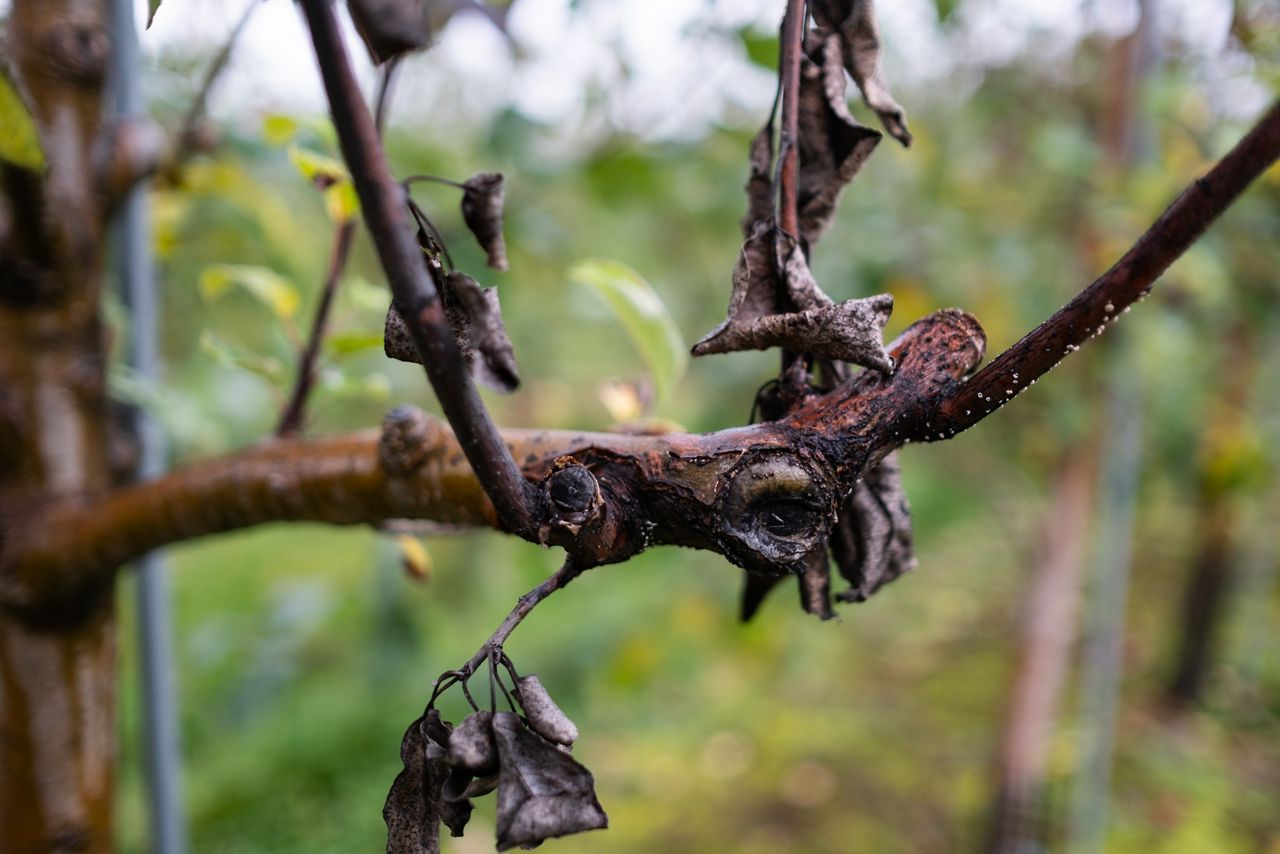
“With the erratic weather, we might get a 75-degree day [in the spring], and the bacteria love hot, wet weather,” Cox said.
Currently, growers use antibiotics to manage the disease, which if not controlled, can take out an entire orchard killing each tree.
“That is becoming more and more questionable, and so a lot of my work is looking at finding alternatives to antibiotics. At the same time, we’re tracking a lot of antibiotic resistance in this pathogen,” Cox said.
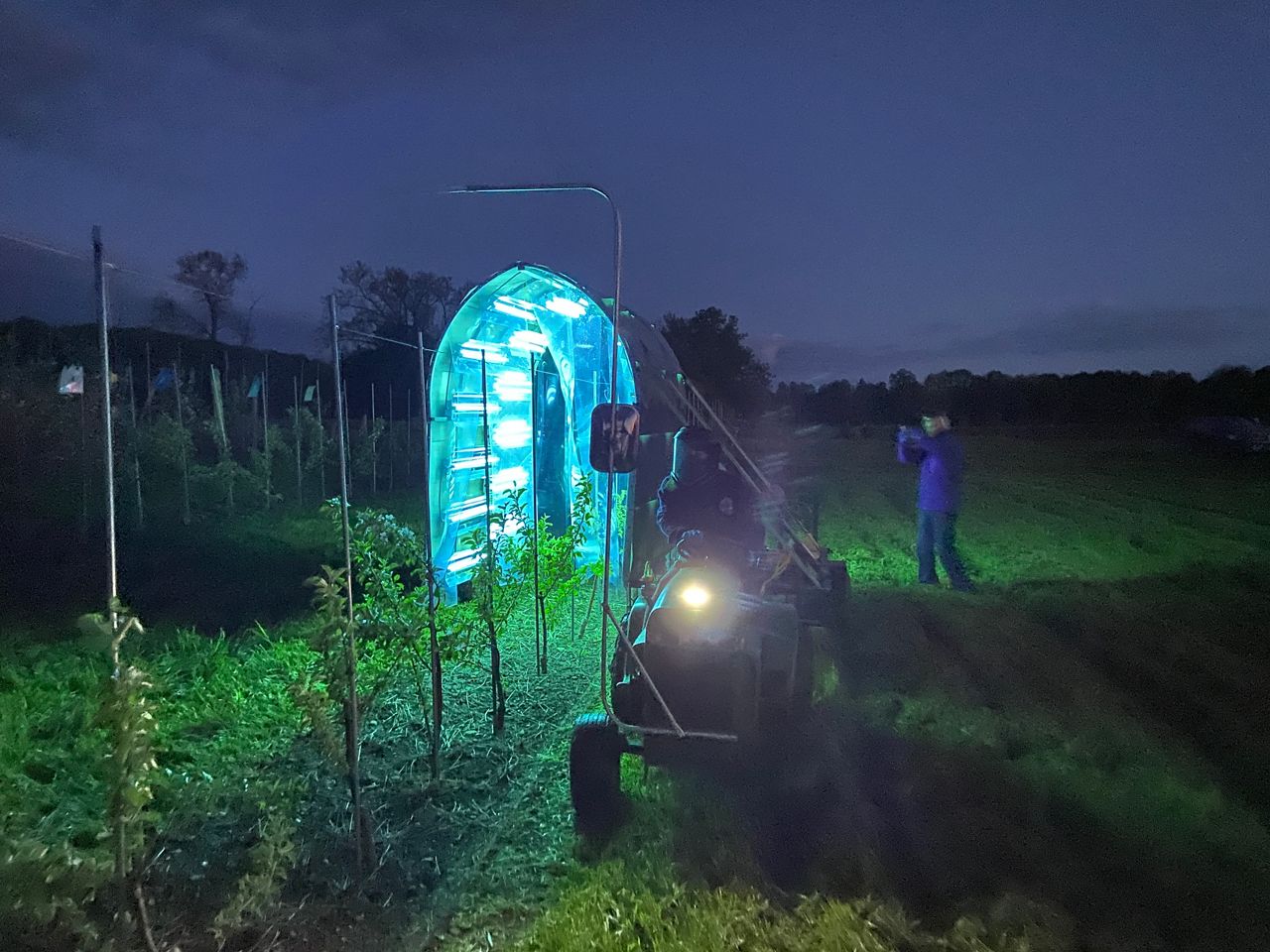
Vincent Sicignano, owner of Navarino Orchard in Syracuse, said he first experienced fire blight in his orchard sometime between 2010 and 2012.
“We had a hailstorm go through in early spring and really cracked the bark open,” he said.
The blight will infiltrate the tree through open wounds, like cracked bark, more rapidly than a healthy tree, Sicignano said.
“Fire blight is one of the hardest diseases to control; it spreads through wind and water. You get 1/100 of an inch of rain, and it’ll spread the bacteria to the next tree, and the way plantings are now with all the dwarf trees, when the wind blows the branches rub together and it spreads right down the row,” he said.
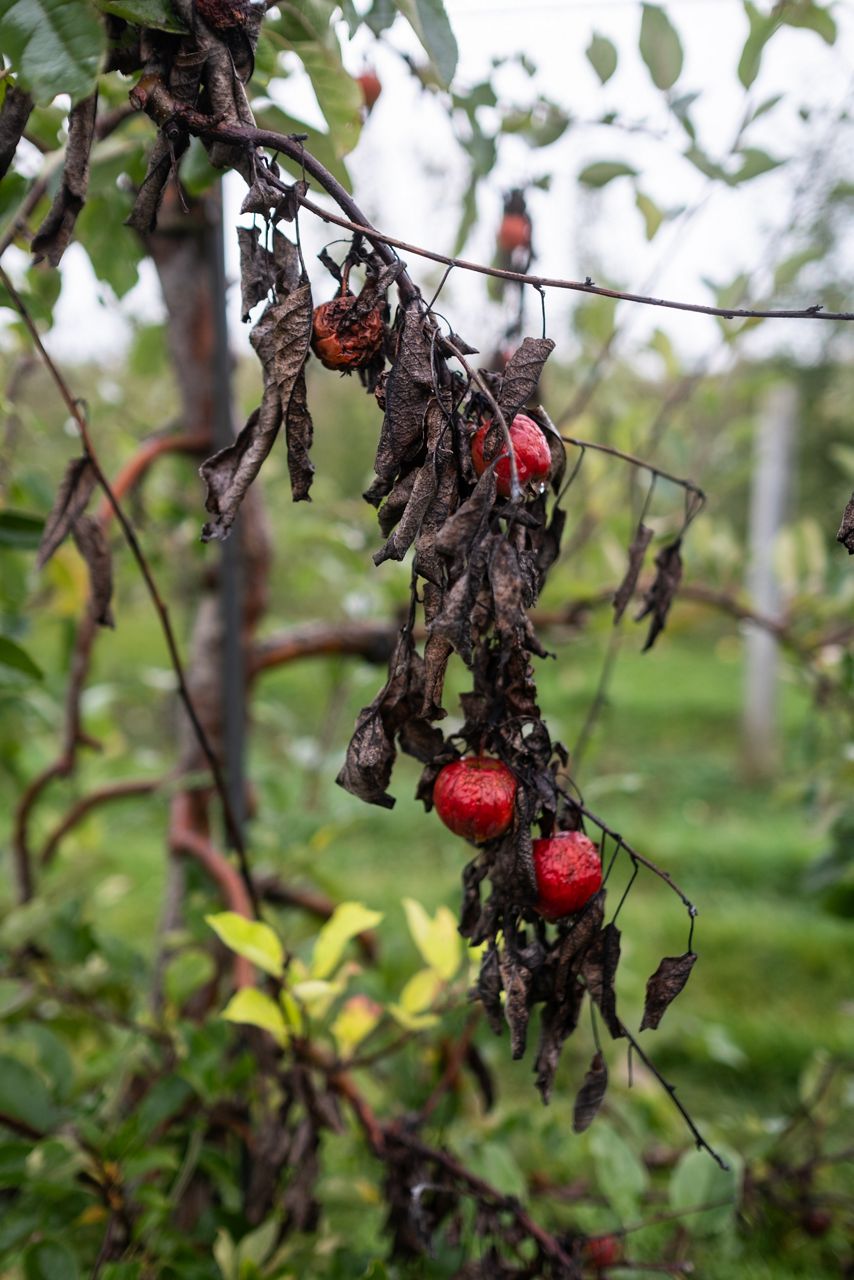
Growing trees closer together allows Sicignano to get 800 bushels of apples per acre rather than 500 bushels if they grew them farther apart, but it puts his crop at more risk.
When a tree becomes infected, it looks as if the branches and leaves were burnt, they turn brown and dry up.
“You can also see a canker on the tree where bacteria just ooze out of the tree,” Sicignano said.
To prevent fire blight, Sicignano uses streptomycin, an antibiotic, during the period when trees are in bloom. Once they start seeing more fire blight, he adds in chemicals to treat it as well, he said.
“It would knock back the bacteria for say 24 to 36 hours, not a long time so when you are in bloom for a week, every time it calls for a sprinkle, you have to be out there before it starts spraying streptomycin,” Sicignano said.
On a year where fire blight is very prevalent, Sicignano said he would take down 50 trees in his orchard. In one area of the orchard, he lost many ruby frost trees last season because of the disease.
The alternative method Cox has been researching is a germicidal ultra-violet light that kills the bacteria that causes fire blight on the trees.
“We put the bacterium out, we zapped it and then we zapped it a second time the next day, and then over the course of the season, we measured to make sure there were no adverse changes in physiology,” he said.
Cox said they put more bacteria that would ever occur in nature to prove his concept that the light would kill the bacteria.
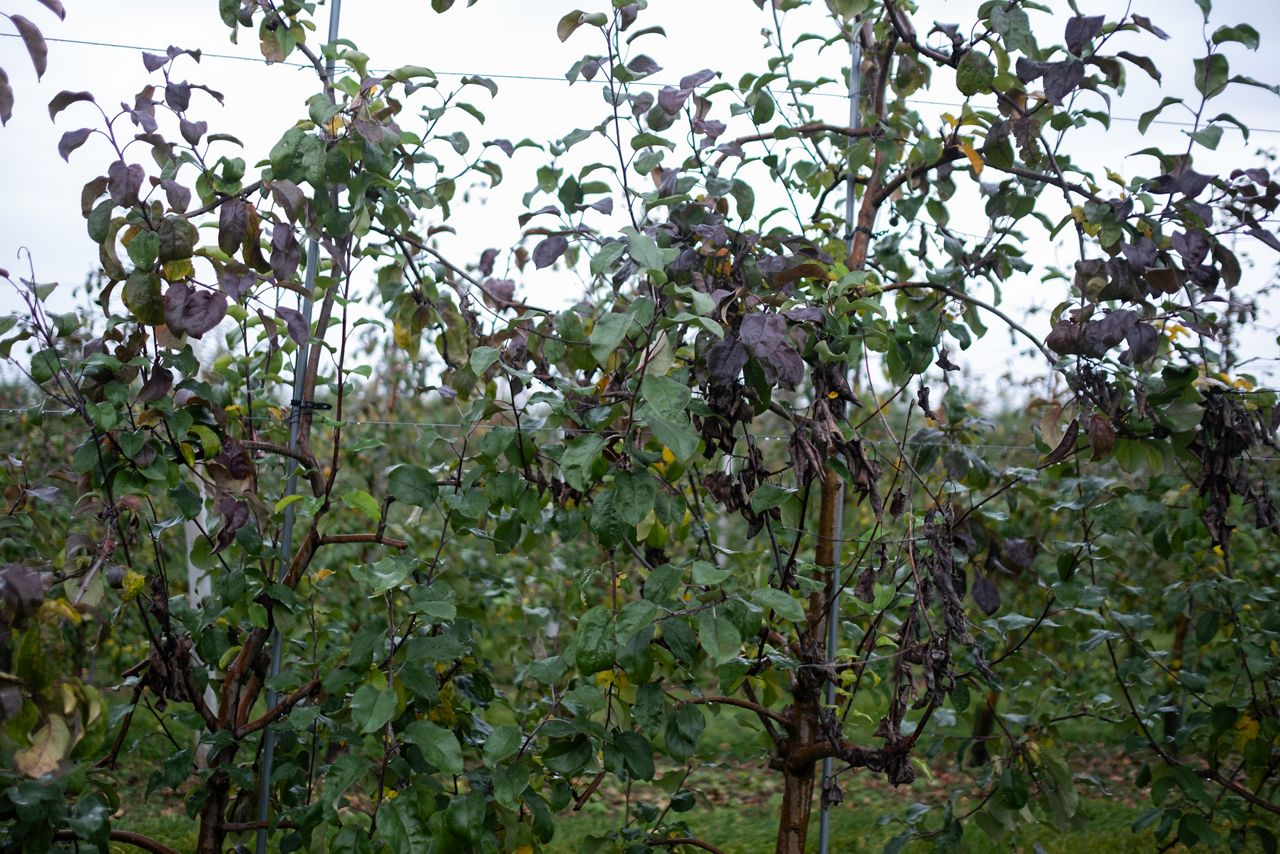
“We found it can reduce [fire blight] just as well as the standards in this particular test. It maybe not be as good as antibiotics, but we have to try and get away from those types of situations,” he said.
Typically, growers would need to use the UV light between three and four times per season, Cox said.
“Depending on when high-risk periods were determined by disease forecasting, it would tell growers when they need to go out use these methods,” Cox said.
This is similar to how growers apply antibiotics currently, he said.
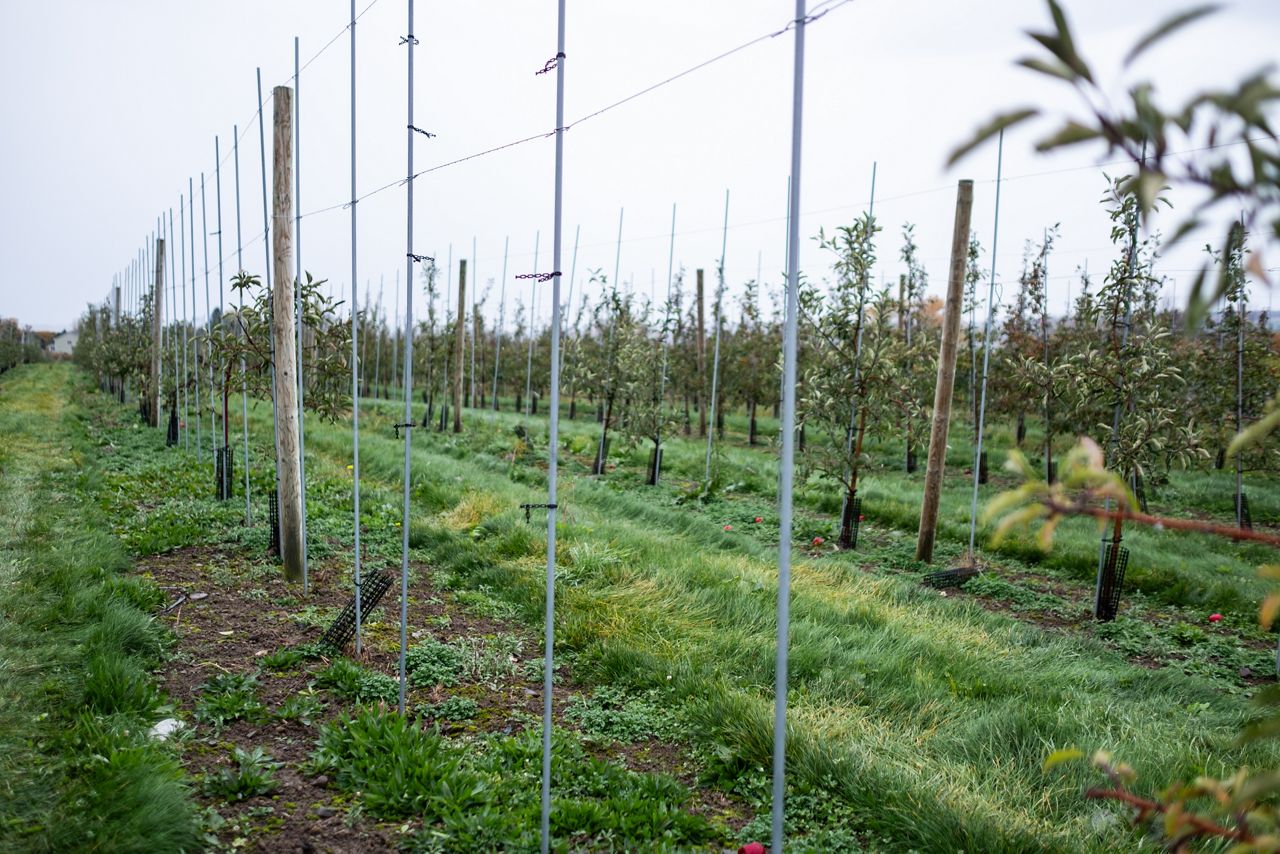
To apply chemical treatment, Cox estimated it costs between $25 and $40 per acre, but with the UV light, which can be built using lights found online, a grower would use a tractor to pull it over the trees, Cox said.
He estimates the entire UV light unit would cost a grower between $8,000 and $10,000, which is well below their pesticide budget.
Some farmers may be skeptical of the new antibiotic-free technology, but Cox said to follow the research.
“I’ve learned the limits and abilities of the material; it just depends on your personal investments. We’ve had three years of data, and we’re getting more,” he said.




